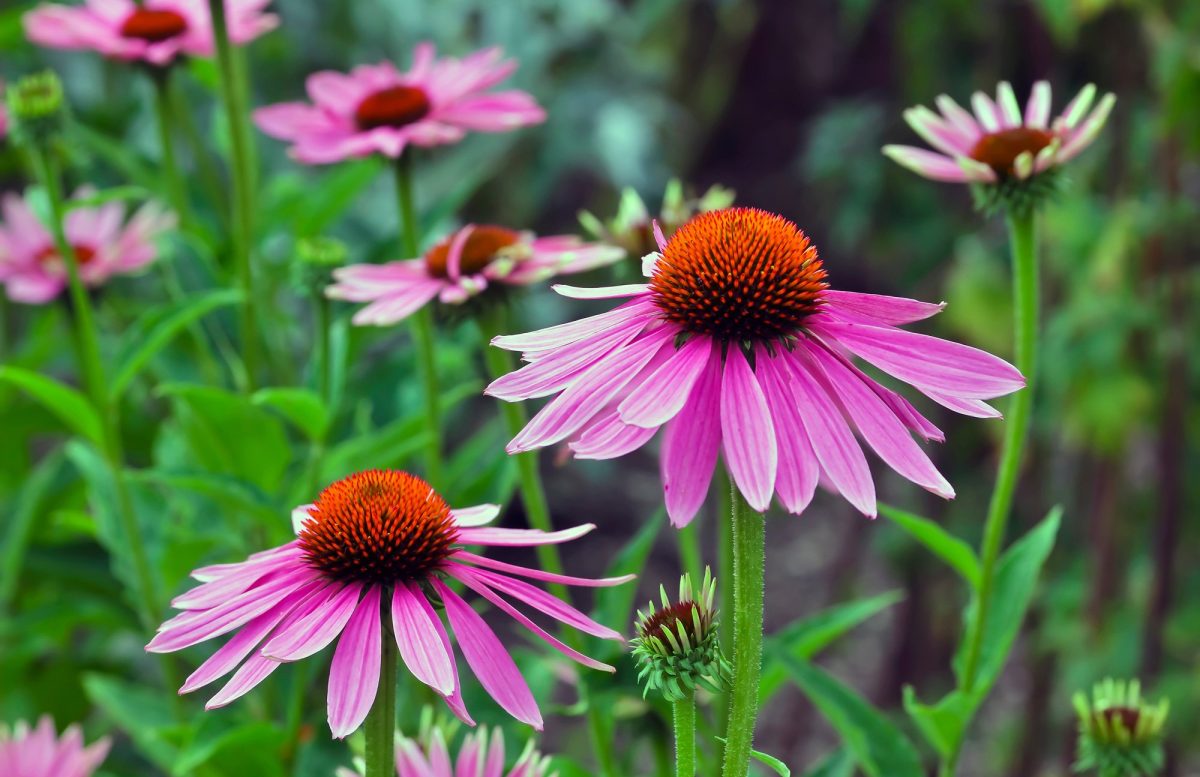Echinacea, also known as purple coneflower, is a flowering herb that is native to North America. It has a long history of use in traditional medicine and has been touted for its many health benefits..
Herbal Actions:
Echinacea is known for its immune-boosting properties. It contains compounds called alkamides, which can stimulate the immune system by activating white blood cells. This can help the body fight off infections, including colds and flu. Additionally, echinacea has anti-inflammatory properties, making it useful for treating conditions such as arthritis and asthma. It is also a natural pain reliever and can be used to alleviate headaches and other types of pain.
Folklore:
Echinacea has a rich folklore history, with many Native American tribes using it for various purposes. The Cheyenne and Lakota tribes used echinacea for sore throats, coughs, and other respiratory conditions. The Kiowa tribe used it to treat toothaches and sore gums. The plant was also used as a general tonic to boost overall health and vitality.
Energetics:
Echinacea is believed to have a cooling and drying effect on the body. It is often used to treat conditions that are characterized by heat and inflammation, such as fevers and infections. However, echinacea should be used with caution in individuals who tend to be cold and dry, as it may exacerbate these conditions.
Spiritual References:
Echinacea is associated with the throat chakra, which governs communication and self-expression. It is believed to help individuals speak their truth and express themselves more clearly. Additionally, echinacea is associated with the element of air, which represents clarity, intellect, and communication.
ECHINACEA (Echinacea purperea)
Family: Asteraceae
Parts Used: Roots/Flower.
Taste: Sweet, diffusive, bitter. Diffusive – Tingling mouth feel (works between the nerves & the circulatory system)
Herbal Actions: Lymphagogue, Alterative & Immune stimulant.
Lymphagogue: facilitates in the draining, cleansing, and detoxification of the lymphatic ducts and glands, as well as the blood and interstitial fluids.
Alterative: Echinacea’s primary action is working on the blood and lymph systems, clearing out toxins and purifying these fluid tissues. This can range from simple lymphatic stagnation from a cold or flu, to very serious blood poisoning or sepsis.
Immune Stimulant: This is the primary way that Echinacea is defined in modern Western herbalism, the result of extensive scientific research on this plant. This action works to stimulate the body’s innate defense mechanism by raising white blood cell count, thus helping the body itself to destroy pathogens and develop resistance to them. Echinacea has developed quite a reputation as an immune stimulant, particularly increasing the response time and count of white blood cells attacking an invader/pathogen within the body. This has ultimately led to a widespread usage of it in the treatment of a wide variety of common acute conditions, such as standard coughs, colds, and flus, which is quite different from how it was traditionally used.
Affinities: Immune Systems, Lymph & blood.
Immunity: Echinacea is supportive to the immune system, through stimulating the innate immunity cells. Lymph & blood – Echinacea has been long used for cleansing septic materials in the blood and the diffusive nature working on sluggish lymph. If we are to think of a primary area of the body Echinacea works on, I consider it to primarily be an alterative for the blood and lymphatics, which are at the root of its effects upon the immune system.
Energetics: Cooling, Drying, Stimulating.
Cooling: This property is shown in the way it is so incredibly effective at treating conditions of heat, irritation, and inflammation.
Stimulating: The elimination process of metabolic waste product.
Specific Indications: Tongue: full, swollen, typically heavily coated. thick white coated tongue- (mild red/orange/brown indicates heat)





